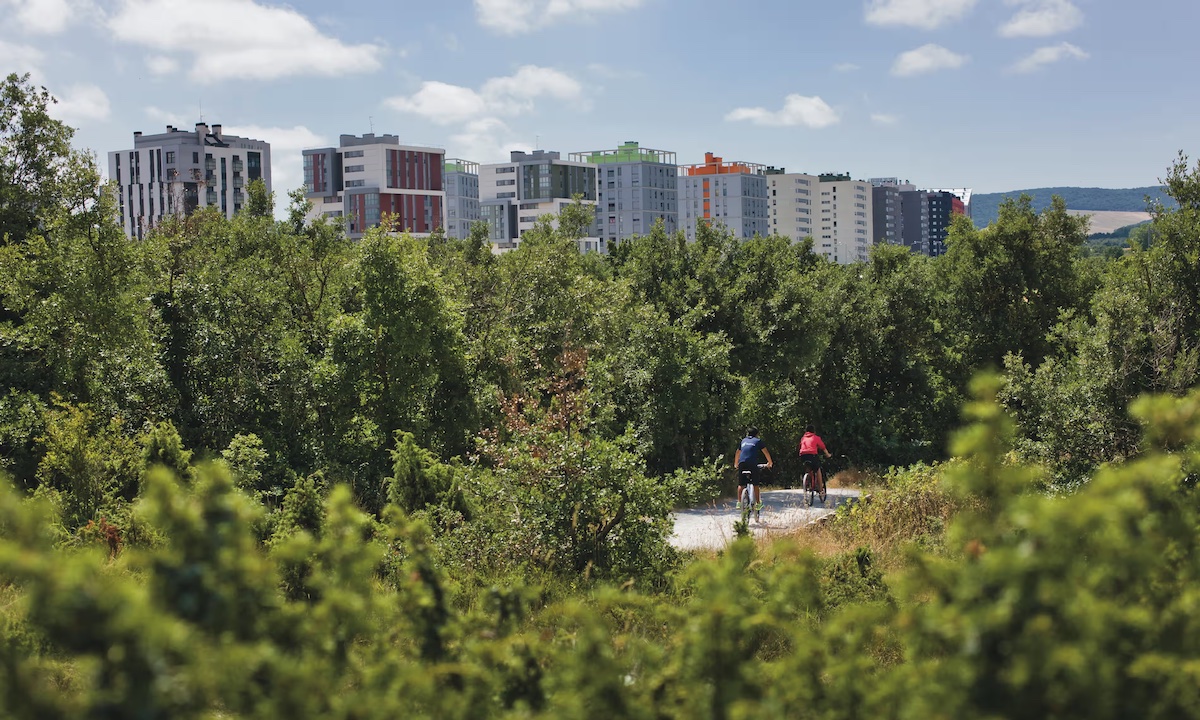The Guardian has just published an article by Stephen Burgen (whom we’ve mentioned before) about a now decades-old plan Vitoria-Gasteiz has been following that has made it a world leader in urban green policies. This process of making people, green spaces, and public transport the priority over the private vehicle has been central to this policy, which was initiated under Mayor José Ángel Cuerda, who led the city from 1979 to 1999.
The article in The Guardian presents the past, the present, and the future of this environmental policy. It also covers the problems that arose in the relationships between the bodies elected by the people and some social organizations when it came time to decide what level of participation the latter would have in defining the plans that guided the process.
We are aware that process of this scope must be carried out based on agreements and participation. But we’re also convinced that, as the article says, “it takes courage to implement sustainable policies.” We would also add that it takes a general, joint overview that is sometimes lacking in groups and organizations that are very focused on certain aspects.
Whenever we discuss these topics, we’re reminded of the opposition to the construction of the Bilbao Metro, which was seen by large sectors of the population (and organizations of that type) as unnecessary. Today, it moves more than 80 million passengers a year, and has become the backbone of transport within the Bilbao metro area.
What happened, and is happening, in Vitoria-Gasteiz doesn’t have the spectacular results the Bilbao Metro does. But anyone walking its streets or enjoying its Greenbelt is aware of the success of this decision and the need to continue on with it. This decision has turned this Basque city into an international role model, and was even named Global Green City by the UN as well as the European Green Capital.
One thing that caught our eye was the reference to how with “greening comes gentrification and in working-class areas this can lead to the displacement of the original inhabitants as property prices rise.” When one reads this, one wonders if the solution to gentrification is to limit the “humanization” of cities, or if it might be better to have strong public policy that guarantees good housing at reasonable prices throughout the urban area.
The Guardian – 20/12/2023 – Great Britain
‘People are proud of this green spirit of ours’: how a small Spanish city rejected cars
They call it the anillo verde, the green ring, a 30km (19 mile) series of parks and cycle lanes that encircle Vitoria-Gasteiz, the capital of the Basque region in northern Spain. Broad, tranquil avenues of tall trees link parks, squares and allotments, forming a circular oasis around a city centre that itself is largely car-free and where, aside from a passing tram, the dominant sound is conversation, birdsong and even the persistent chirping of cicadas.
(Follow) (Automatic translation)
Last Updated on Feb 12, 2024 by About Basque Country





























